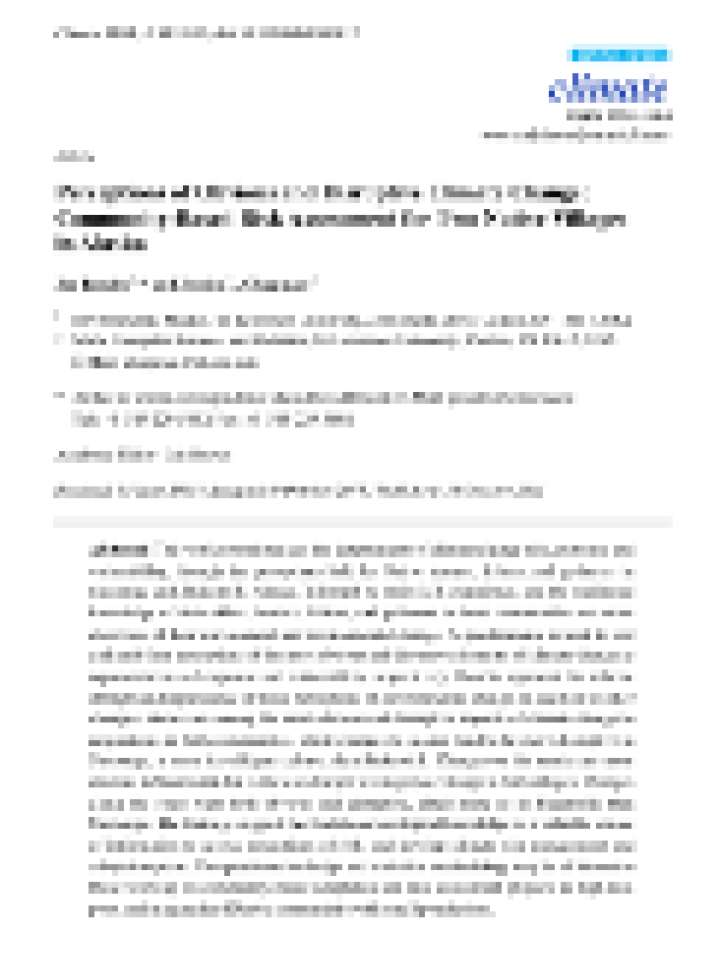Perceptions of obvious and disruptive climate change: community-based risk assessment for two native villages in Alaska
Climate 2015, 3(4), pp. 812-832; doi:10.3390/cli3040812
This work operationalizes the determinants of climate change risk, exposure and vulnerability, through the perceptions held by Native hunters, fishers, and gatherers in Savoonga and Shaktoolik, Alaska. Informed by their skill, experience, and the traditional knowledge of their elders, hunters, fishers, and gatherers in these communities are astute observers of their environment and environmental change. A questionnaire is used to sort and rank their perceptions of the most obvious and disruptive elements of climate change as representations of exposure and vulnerability, respectively.
The findings suggest that traditional ecological knowledge is a valuable source of information to access perceptions of risk, and develop climate risk management and adaptation plans. The questionnaire design and statistical methodology may be of interest to those working on community-based adaptation and risk assessment projects in high-risk, poor, and marginalized Native communities with small populations.
Explore further
